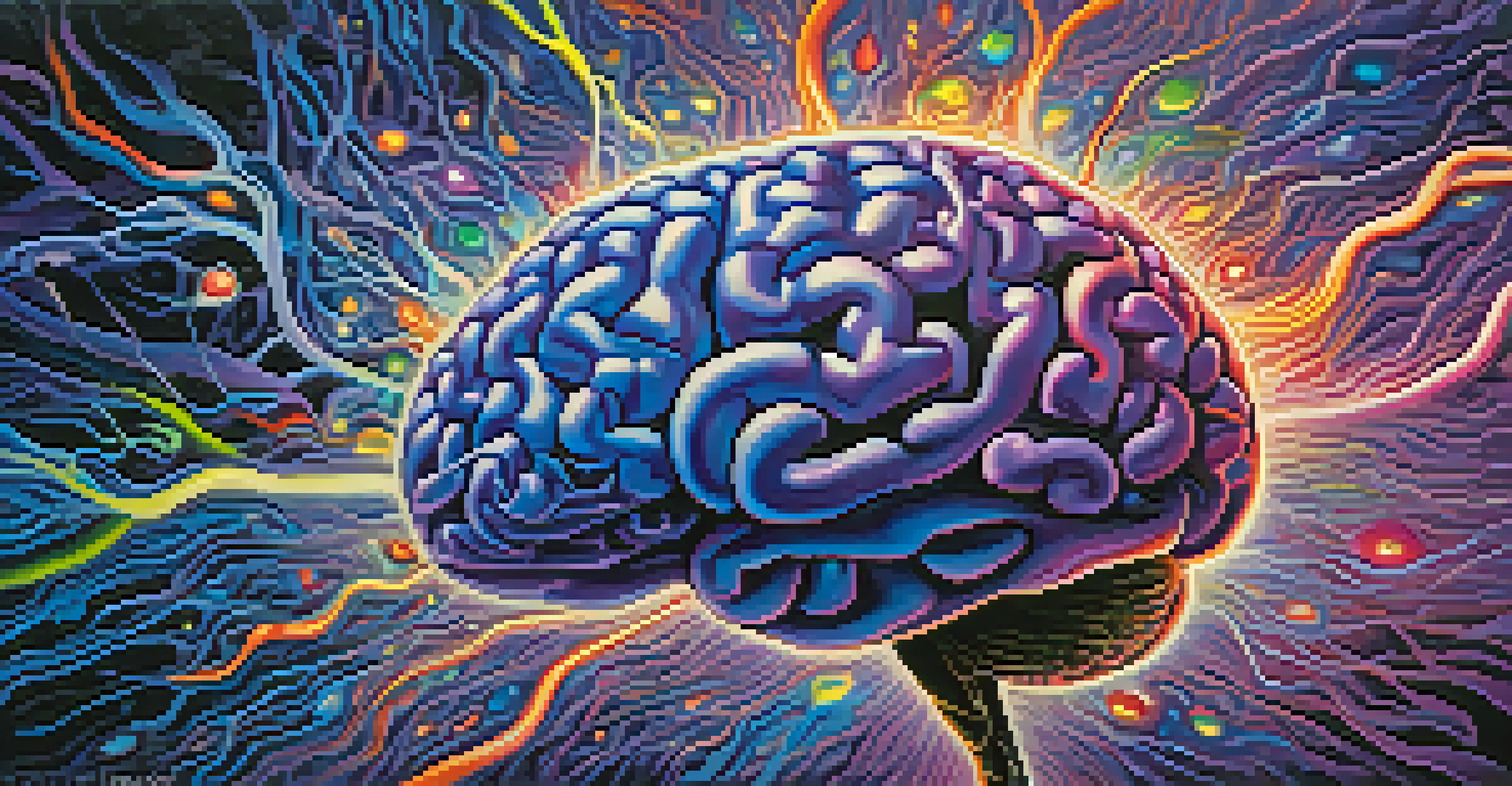The Science Behind Hallucinogens in Psychotherapy Training

Understanding Hallucinogens: A Brief Overview
Hallucinogens are substances that alter perception, mood, and cognitive processes. Common examples include LSD, psilocybin, and ayahuasca. These compounds have been used for centuries in various cultures for spiritual and healing purposes.
The use of psychedelics in mental health treatment is not a new concept, but it is a rapidly evolving field that has the potential to change lives.
In recent years, there's been a resurgence of interest in the therapeutic potential of these substances, particularly in the context of mental health treatment. This renewed focus has led to a growing body of research exploring how hallucinogens can aid in psychotherapy.
Understanding how these substances work in the brain is crucial. They primarily affect serotonin receptors, which play a key role in mood regulation, providing insight into their potential for treating conditions like depression and PTSD.
The Historical Context of Hallucinogens in Therapy
The use of hallucinogens in psychotherapy isn't a new concept; it dates back to the 1950s and 60s. Early research showed promising results, particularly with substances like LSD, which were thought to enhance therapeutic outcomes.

However, the subsequent legal restrictions and societal stigma surrounding these substances led to a halt in formal research. This gap left a void in understanding their potential benefits in a therapeutic setting.
Therapeutic Use of Hallucinogens
Hallucinogens like LSD and psilocybin are being researched for their potential to treat mental health conditions such as depression and PTSD.
Recently, a wave of clinical studies has revitalized interest, demonstrating that with proper guidance, hallucinogens can facilitate breakthroughs in therapy, encouraging a more open-minded approach to their use in mental health treatment.
The Mechanisms of Action in the Brain
Hallucinogens primarily influence the brain's serotonin system, which affects mood and perception. When ingested, these substances can lead to profound changes in consciousness, allowing individuals to experience their thoughts and emotions from a new perspective.
Psychedelics can help us confront our unresolved issues, allowing for profound insights and personal growth.
This altered state can lead to increased emotional release and introspection, making it easier for patients to confront traumatic memories or deep-seated fears. For many, this can catalyze healing and foster personal growth.
Moreover, the neuroplasticity induced by these substances may help rewire negative thought patterns, offering hope for those struggling with stubborn mental health issues that traditional therapies might not fully address.
The Role of Guided Therapy in Hallucinogen Use
Guidance from trained therapists is essential when using hallucinogens in a therapeutic context. This ensures that patients navigate their altered states safely and constructively, minimizing the risks associated with unsupervised use.
Therapists provide a supportive environment, helping patients set intentions for their experience and process the emotions that arise. This partnership can amplify the therapeutic benefits of hallucinogens, leading to more meaningful insights.
Guided Therapy is Essential
Trained therapists play a crucial role in guiding patients through hallucinogenic experiences, ensuring safety and enhancing therapeutic benefits.
Additionally, trained professionals can help patients integrate their experiences into everyday life, which is crucial for sustaining the benefits of therapy long after the session ends.
Current Research and Findings on Efficacy
Recent studies have shown promising results in the use of hallucinogens for various mental health conditions, including anxiety, depression, and PTSD. These findings are paving the way for a new paradigm in treating complex psychological disorders.
For instance, research at institutions like Johns Hopkins has demonstrated that psilocybin can significantly reduce symptoms of depression, with effects lasting for months after treatment. Such studies highlight the potential for lasting change with the right therapeutic approach.
Moreover, the growing body of evidence is prompting a reassessment of regulatory policies surrounding these substances, potentially leading to more widespread acceptance and integration into mainstream therapy.
Ethical Considerations in Using Hallucinogens
As with any treatment, ethical considerations must be at the forefront when integrating hallucinogens into psychotherapy. Informed consent is crucial, ensuring patients fully understand what to expect during their experience.
Therapists must also be aware of the potential for misuse or misunderstanding of these substances, emphasizing the importance of a structured, supportive environment. This safeguards against any adverse effects that might arise from improper use.
Ethics in Hallucinogen Therapy
Ethical considerations, including informed consent and structured environments, are vital for the responsible use of hallucinogens in psychotherapy.
Moreover, ongoing education and training for therapists in this emerging field is vital to ensure that ethical standards are maintained, and patients receive the highest quality of care.
The Future of Hallucinogens in Psychotherapy Training
The future of hallucinogens in psychotherapy training looks promising, with an increasing number of programs beginning to incorporate this knowledge into their curriculums. As research continues to unfold, training will evolve to include evidence-based practices related to these substances.
This shift may lead to a new generation of therapists who are not only open to but also skilled in utilizing hallucinogens therapeutically. Such training will be pivotal in ensuring that future practitioners approach their use with the necessary knowledge and ethical considerations.

Ultimately, embracing this innovative approach could transform the landscape of mental health treatment, offering new hope for individuals seeking healing from psychological distress.